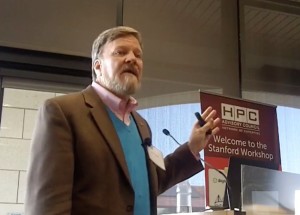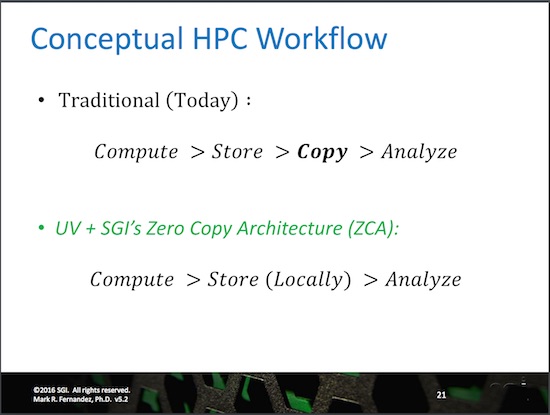
Mark Fernandez, SGI
In this video from the 2016 Stanford HPC Conference, Mark Fernandez from SGI presents: SGI Update – Zero Copy Architecture (ZCA).
“In high performance computing, data sets are increasing in size and workflows are growing in complexity. Additionally, it is becoming too costly to have copies of that data and, perhaps more importantly, too time and energy intensive to move them. Thus, the novel Zero Copy Architecture (ZCA) was developed, where each process in a multi-stage workflow writes data locally for performance, yet other stages can access data globally. The result is accelerated workflows with the ability to perform burst buffer operations, in-situ analytics & visualization without the need for a data copy or movement.”
Dr. Mark Fernandez has over 20 years of experience with various types of scientific and high performance computing projects. As Americas Technology Officer supporting SGI’s technical sales efforts, he works closely with customers and SGI engineering capturing user requirements and incorporating those into future systems. Dr. Fernandez is focused on helping solve complex HPC problems.
In this video from SC15, Dr. Eng Lim Goh from SGI describes how the company is embracing new HPC technologies such as new memory hierarchies. With the convergence of HPC and Big Data as a growing trend, SGI is envisions a “Zero Copy Architecture” that would bring together a traditional supercomputer with a Big Data analytics machine in a way that would not require users to move their data between systems.





